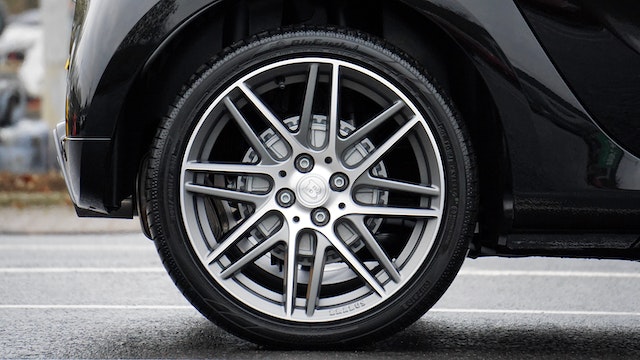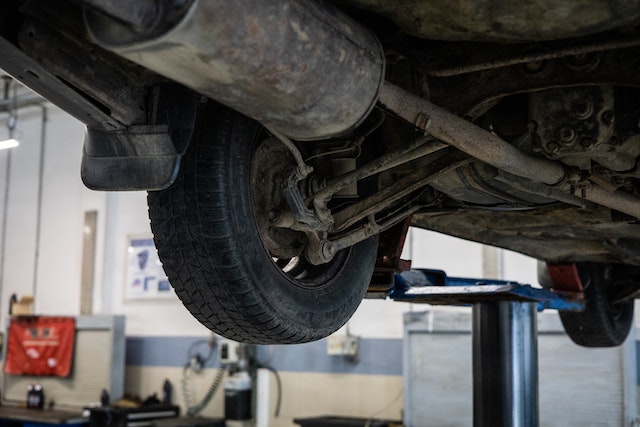Tires play a critical role in your vehicle’s performance, safety, and overall driving experience. To get the most out of your tires and ensure their longevity, it’s important to follow proper maintenance practices. In this blog post, we will explore essential tips for ensuring long-lasting tire performance. By implementing these tips, you can optimize traction, handling, and fuel efficiency while maximizing the lifespan of your tires.
Proper Inflation
Maintaining proper tire pressure is crucial for top-notch tire performance and durability. To ensure your tires stay in top shape, using a reliable digital pressure gauge to regularly check the pressure is essential. It’s essential to match the recommended level specified by your vehicle manufacturer.
Running on underinflated tires can increase rolling resistance, resulting in non-uniform wear patterns, reduced fuel efficiency, and erratic handling. Meanwhile, overinflated tires can cause a bumpy ride and lead to faster wear of the center tread. Keeping your tires appropriately inflated promotes smoother wear, optimizes fuel economy, and boosts overall tire performance.
Regular Rotation
Rotating your tires regularly is crucial for achieving even wear patterns and extending tire life. Front and rear tires wear differently due to variations in weight distribution and drivetrain configurations.
Consult your vehicle’s manual or follow the recommended rotation pattern (usually every 5,000 to 7,000 miles) to ensure all tires wear uniformly. By rotating your tires, you balance out wear and enhance their performance and longevity.
Wheel Alignment
Proper wheel alignment is essential for preserving tire performance and preventing premature wear. Misaligned wheels can cause uneven tire wear, leading to decreased handling capabilities and reduced fuel efficiency.
Have your wheel alignment checked regularly, especially after hitting a curb or pothole. Signs of misalignment include the vehicle pulling to one side or uneven tire wear. By maintaining proper alignment, you optimize tire contact with the road, extend tire life, and enhance driving comfort and safety.
Balancing
Tire balancing is the process of equalizing weight distribution around the tire and wheel assembly. Unbalanced tires can result in vibrations, uneven wear, and potential suspension or steering system damage.
Have your tires balanced during rotation or if you experience vibrations at higher speeds? Balancing ensures smooth and comfortable rides, minimizes stress on tire components, and promotes longer tire life.
Proper Tread Depth
Monitor your tire tread depth regularly using a tread depth gauge. Adequate tread depth is crucial for optimal traction, especially in wet or slippery conditions. Replace tires when the tread depth reaches 4/32 of an inch.
Insufficient tread depth compromises grip and increases the risk of hydroplaning. By maintaining proper tread depth, you ensure safe and reliable tire performance, improved handling, and enhanced braking capabilities.
Avoid Overloading
Avoid exceeding the maximum load capacity recommended by the tire manufacturer. Overloading your vehicle puts excessive stress on the tires, leading to accelerated wear, decreased fuel efficiency, and potential tire failure.
Refer to your vehicle’s manual or the tire placard for load capacity information. By adhering to the specified weight limits, you preserve tire integrity and promote long-lasting performance.
Avoid Speeding and Aggressive Driving
Excessive speeding and aggressive driving habits, such as sudden acceleration, hard braking, and sharp turns, can significantly impact tire wear. These behaviors increase tire temperature, accelerate tread wear, and compromise tire performance and longevity.
Drive responsibly, obey speed limits, and practice smooth acceleration and braking to minimize stress on the tires. By adopting a cautious driving style, you ensure your tires remain in good condition for an extended period.
Regular Inspections
Perform visual inspections of your tires regularly to identify any signs of damage, bulges, cracks, or embedded objects. Inspect the sidewalls, tread, and overall tire condition. Address any issues promptly by seeking professional assistance or tire replacement.
Additionally, ensure that your tires are free from debris and properly cleaned. Regular inspections help you catch potential problems early, prevent tire failure, and maximize the lifespan of your tires.
Conclusion
By following these essential tips for ensuring long-lasting tire performance, you can enhance traction, handling, and fuel efficiency while extending the life of your tires. Proper tire maintenance and responsible driving habits go hand in hand with preserving tire integrity and ensuring a safe and smooth driving experience. Invest time and effort in maintaining your tires, and you’ll reap the benefits of improved performance and long-term cost savings.













